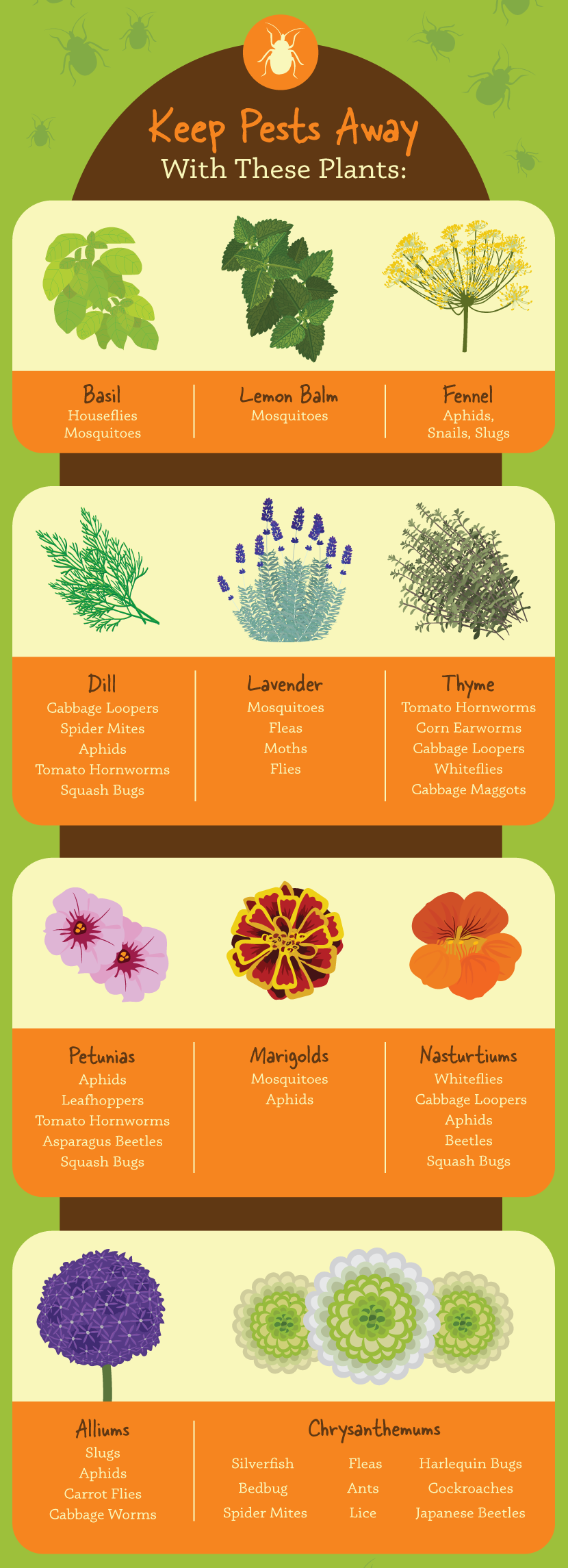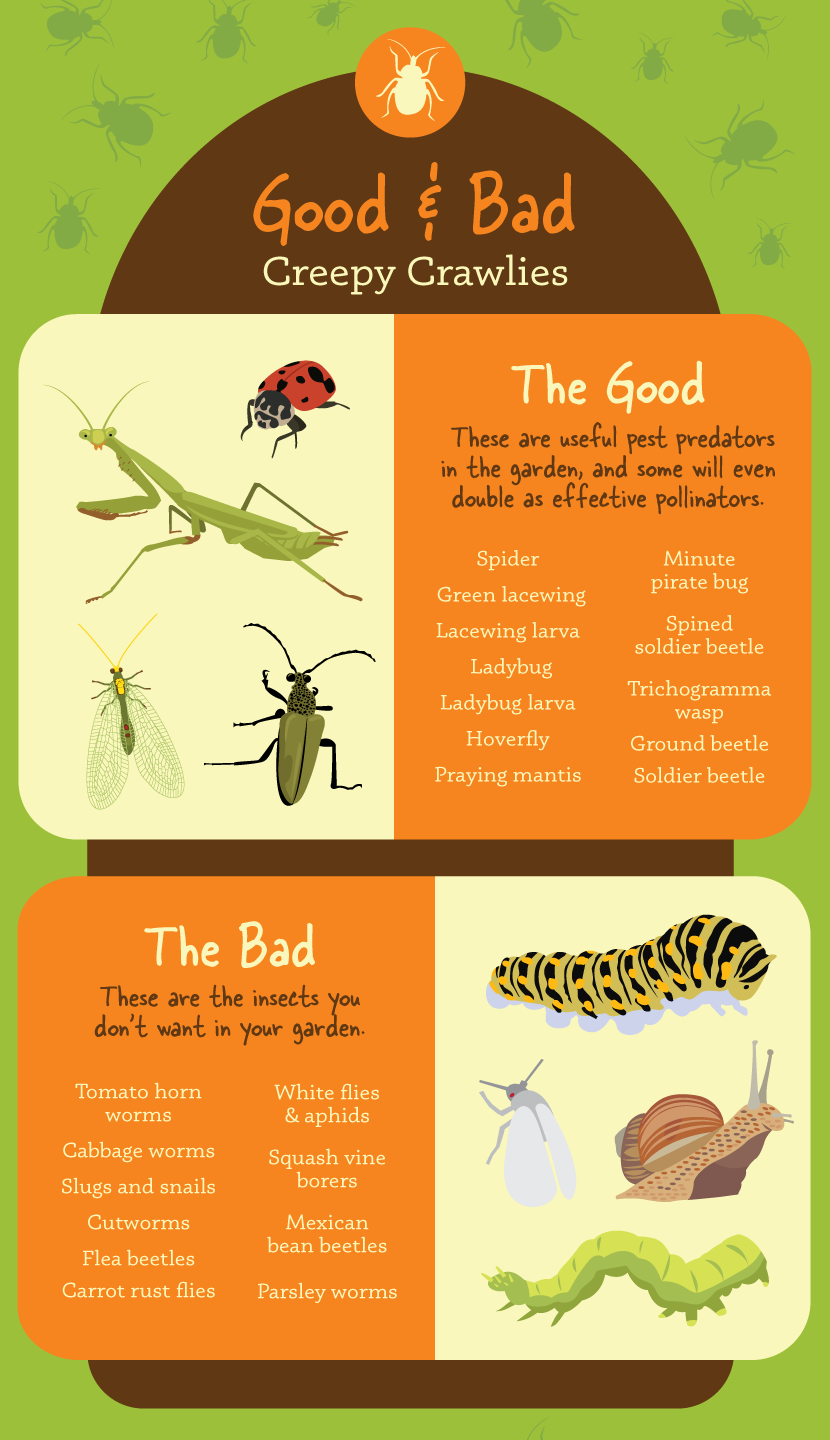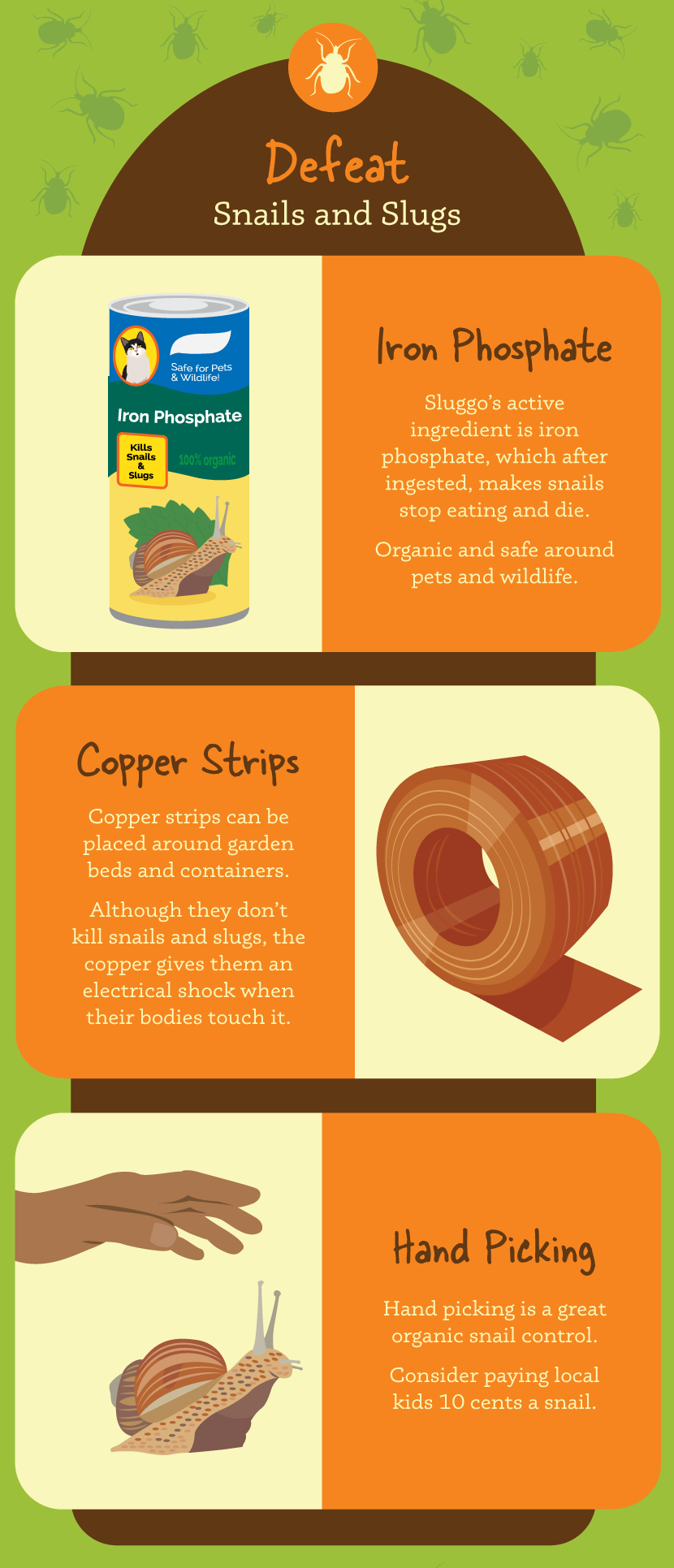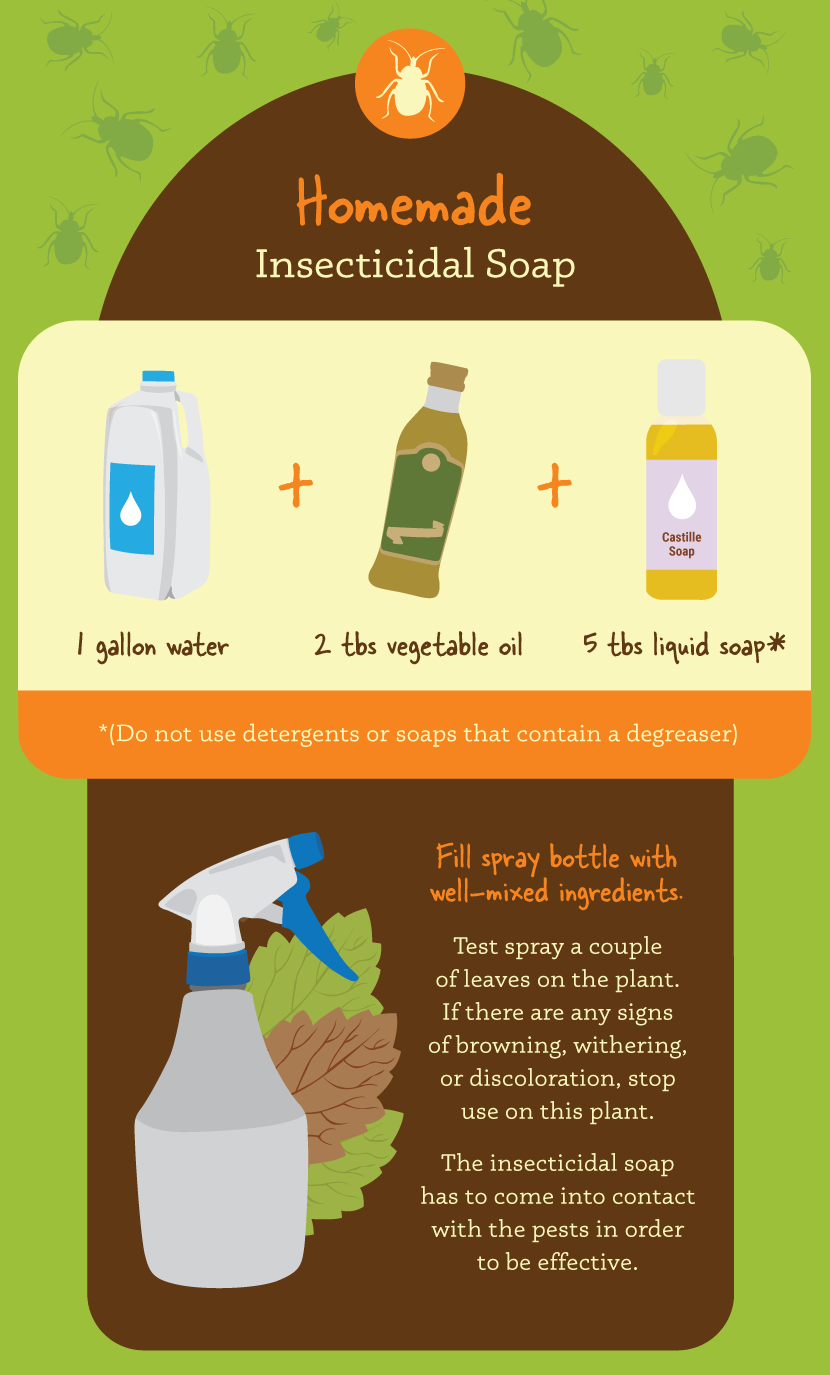A Guide to Organic Pest-Free Gardening
Using as many organic techniques as possible in your garden or yard is the healthiest way to protect the environment and the people around you.
But how can you protect your Garden of Eden from insects and critters that would like to make it their dinner?
How can you resist breaking out the big guns, such as synthetic pesticides? We organic gardeners have our ways.
The Problem with Synthetic Pesticides
The truth about synthetic pesticides is that they are very good at their jobs. In fact, they are too good, and that usually comes with a price. Synthetic chemicals (whether pesticides or herbicides) may seem to work faster initially. However, in the long run, you will find that they aren’t any more effective than organics and usually end up doing more harm than good. Pesticides don’t differentiate between the good guys and the bad guys. They kill everything, including pollinators and other beneficial insects. In addition, they don’t do any favors for the environment, wildlife, and our human bodies.
Constantly Improve Your Garden Soil
The first line of defense against garden pests is to improve your soil on a continual basis. Even the most fertile soil eventually becomes nutritionally depleted from hungry plants. Nutritionally depleted soil = nutritionally depleted (unhealthy) plants, and unhealthy plants are a magnet for pests and disease. Here are some tips for improving garden soil:- Whenever possible, don’t till or remove topsoil from the garden.Regularly add compost and other amendments to the bed by simply layering them on top. The redworms and other beneficial organisms will do the work for you.
- Rotate the plants in your garden beds.Many pests (and diseases) are focused on specific plant families. For example, cabbage loopers are particularly attracted to plants in the brassica family (cole crops). In the first growing season, the pests that find brassicas irresistible will be on the lookout for potential host plants. They may (or may not) find your broccoli in this first year. But once they do, they begin to set up camp for good. You can thwart their efforts for the next season by practicing plant rotation. If you have broccoli planted in one of your garden beds this year, next year plant them in a different bed. Do the same with each plant family.
- Start your own compost pile.Compost is organic plant and animal matter that’s completely broken down, making it readily available to plant roots. It adds nitrogen, phosphorus, potassium, plus other nutrients (depending on the organic materials) such as copper, iron, iodine, manganese, boron, cobalt, and molybdenum. Compost also builds a rich, friable garden soil, so I’m a fan of adding it to my garden beds every chance I get. The most cost-effective way to have a steady supply of compost is to make your own.
- Plant green manures (cover crops).Green manures, aka cover crops, are legumes, grains, or grasses planted in a garden bed for introducing nitrogen, inhibiting weeds, preventing soil erosion, and adding organic matter. Legumes such as field peas, hairy vetch, red clover, and soybean (edamame) “fix” nitrogen via the bacteria that lives in their roots. Once the legumes begin to flower, they are knocked down and turned under, releasing nitrogen into the soil. Grains and grasses such as winter rye, rape, wheat, and oats are excellent cover crops for discouraging weeds, preventing erosion, and generally building soil.
Call in the Natural Predators
Mother Nature is fantastic at bringing balance to all things. She has always had the answer to plant pest overpopulation: natural predators, which include insects and other animals. For example, ladybugs from larva to adults will have devoured 5,000 aphids by the time they die, while a green lacewing larva consumes 60 aphids an hour. All you need to do is encourage them to visit the garden by planting what they love. Predatory insects will come for the appetizers (plants) and stay for the main course (pests). Bonus: Predators will often double as effective pollinators in the garden. The following are plants that will lure predators, as well as pollinators, to your garden.
40 Plants for Predatory Insects
- Alyssum
- Aster
- Basil
- Bee balm
- Blazing Star
- Borage
- Butterfly bush
- Calendula
- Coreopsis
- Cosmos
- Dill
- Fennel
- Flax
- Giant hyssop
- Globe thistle
- Goldenrod
- Hollyhock
- Hyssop
- Joe-pye weed
- Lavender
- Lovage
- Lupine
- Marigold
- Marjoram
- Mullein
- Nasturtium
- Oregano
- Purple coneflower
- Queen Anne’s lace
- Rosemary
- Rudbeckia
- Sage
- Scabiosa
- Stonecrop
- Thyme
- Verbena
- Wallflower
- Wild rose
- Yarrow
- Zinnia

Nontoxic and Low-Toxic
When it comes to defining nontoxic and low-toxic pesticides, there are two schools of thought. The first being that many organic pesticides, whether they are purchased or made by the gardener, are considered “nontoxic.” For example, insecticidal soap such as the one made by Safer Brand is eco-friendly and nontoxic to people, pets, and wildlife. I think that this is true for the most part (although it can be irritating to sensitive skin, as well as the eyes). However, can an insecticidal soap tell the difference between pests and beneficial insects? No. And this can be said of many other organic controls as well. So the better question to ask is nontoxic to whom? This is where we come to the other school of thought, which is that anything that kills something can’t be labeled as truly nontoxic. Whichever definition rings true for you, one thing is certain: the following products are much less toxic to the environment, people, and animals than their synthetic alternatives. That said, some organic pesticides are still highly toxic to bees.Hand-to-Hand Combat – Sometimes you can’t beat good, old-fashioned elbow grease. Hand-pick pests from your plants and squish, stomp, or drown them in a bucket of soapy water. Feed them to your chickens. Round up your kids, your sister’s kids, and the neighborhood kids and pay them for their hunting skills. Never underestimate the blast of a water hose. This technique is very effective on aphids and other soft-bodied insects. Be sure to adjust the strength of the stream so it doesn’t pummel plant leaves in the process.
Physical Barriers – Physical barriers such as floating row covers, netting, paper collars, and copper strips work surprisingly well against many pests such as snails, cabbageworms, flea beetles, squash bugs, and more. (Don’t forget that row covers and netting will also keep pollinators from visiting your plants. So, remove them while the plants are blooming.)
Insecticidal Soaps – Insecticidal soaps are true soap (not detergents) mixtures that coat the bodies of insects and dry them out. Works well on soft-bodied insects such as mealybugs, aphids, scales, etc. Highly toxic to bees.
Diatomaceous Earth (horticultural grade) – DE is crushed fossilized diatom and algae skeletons. It enters insect bodies and in effect dries them up. Works well for earwigs, ants, beetles, fleas, ticks, slugs, etc. While it’s safe for people in general, avoid breathing it into your lungs by wearing a dust mask while applying it. Highly toxic to bees.
Horticultural Oils – Horticultural oils are made with various oils (mineral, vegetable, soybean, etc.) and work by disrupting how some insects – such as aphids – eat, poisoning others, and smothering insect eggs. Highly toxic to bees.
Pyrethrins – Pyrethrins are derived from specific chrysanthemums and basically attack an insect’s central nervous system. They aren’t considered the lowest toxicity; however, they are considered acceptable for organic gardening practices. They are biodegradable and break down quickly in the sunlight. Don’t confuse pyrethrins (pyrethrum) with permethrin, which is its synthetic counterpart (and very toxic to cats and other animals). Highly toxic to bees.

Do Organic Pest Control Practices Really Work?
I have often heard people say they don’t believe organic methods work nearly as well as the more toxic poisons found on store shelves. I always wonder if those with this mindset have ever actually tried organic techniques and strategies. Or perhaps, if they simply have not given them enough time to work their magic. Organic pest control methods do work, especially if several are implemented at the same time. Yes, you might lose a few seedlings to snails or have a few holes in some leaves. But in the end, organic gardening practices still offer the most people-, animal-, and Earth-friendly practices for maintaining a healthy balance in the garden.Embed the article on your site

























































